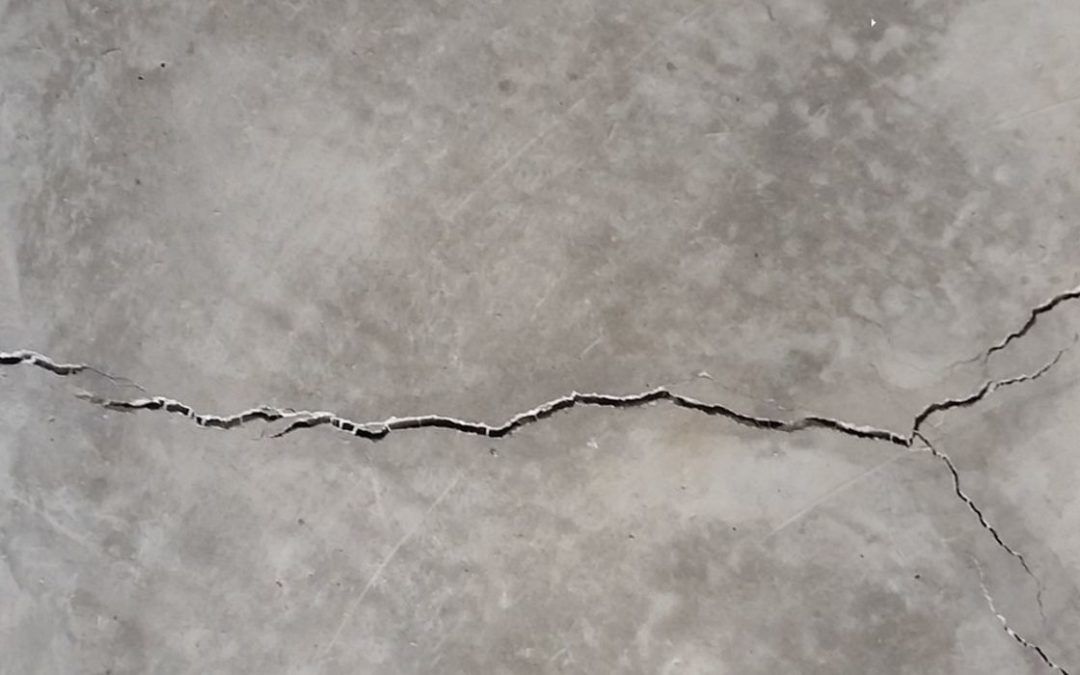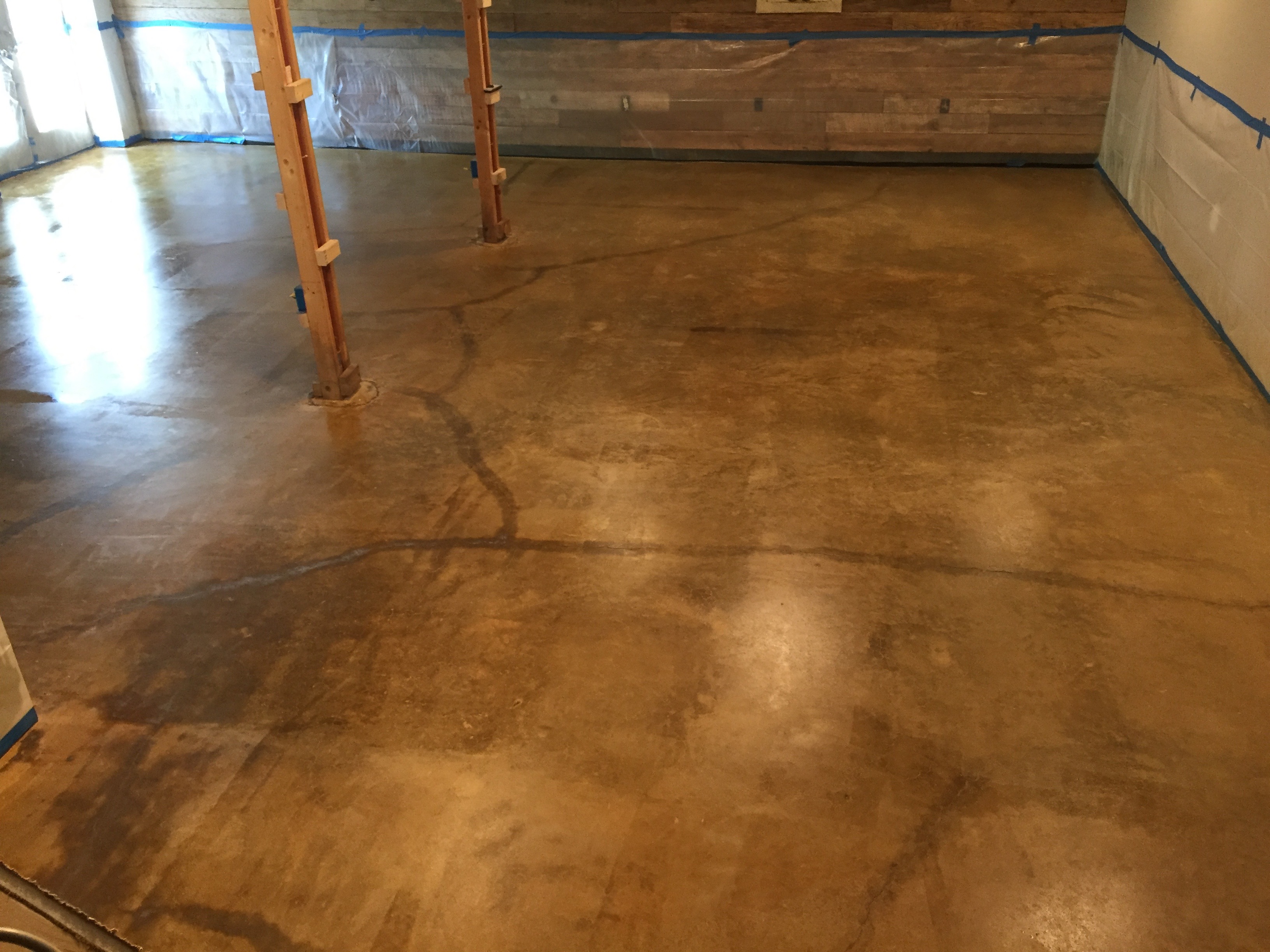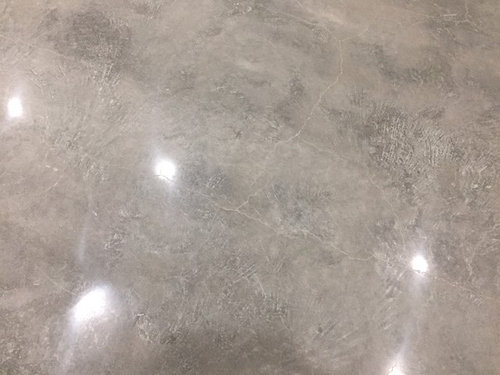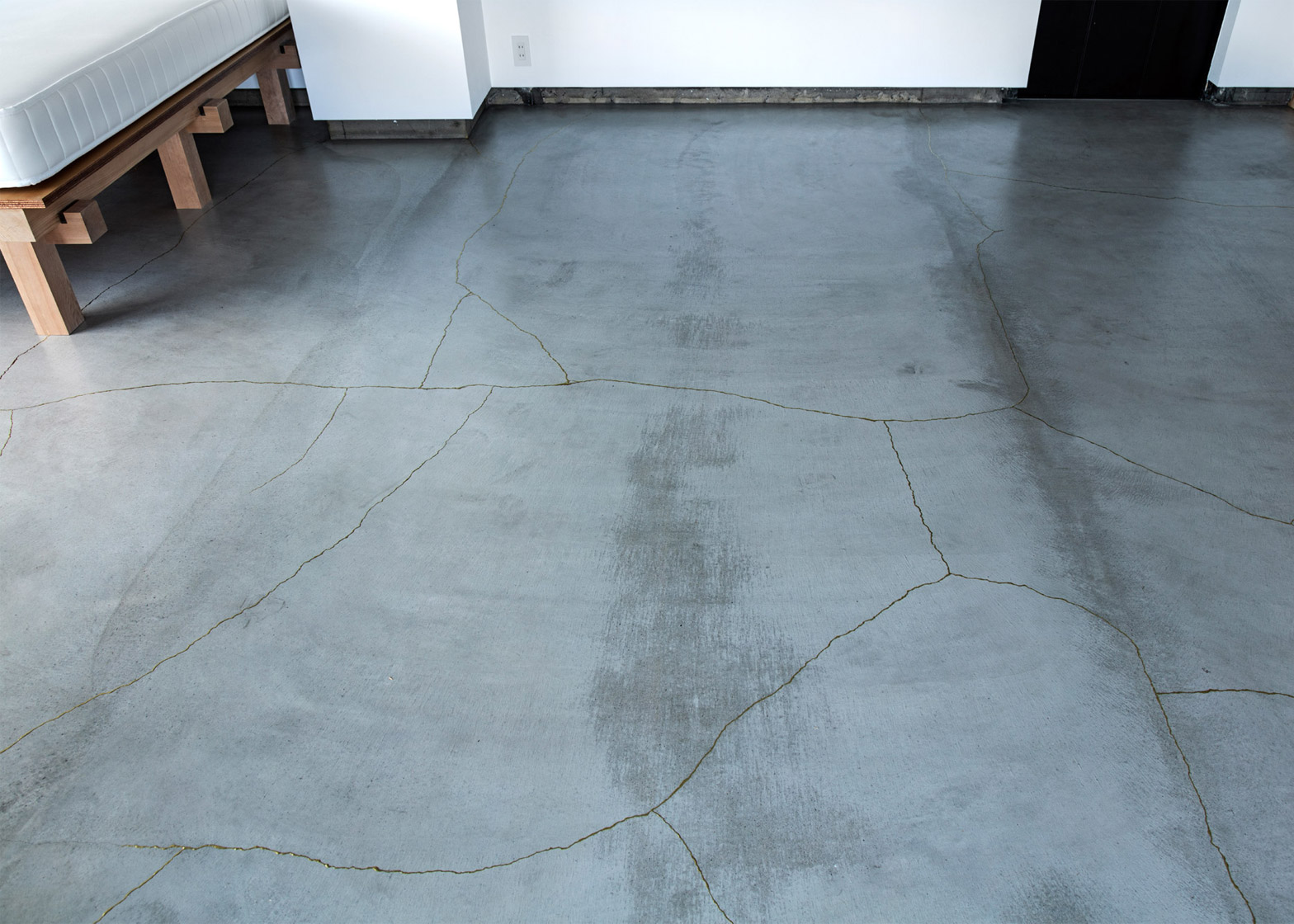Cracks in polished concrete floors can be a concern for homeowners or business owners who have invested in this popular flooring option. While concrete is known for its durability, it is not entirely immune to cracking. Understanding the causes and solutions for these cracks can help you address the issue promptly. Here’s what you need to know.
Concrete floors can develop cracks due to several factors, including shrinkage, settling, or external stressors. Here are a few common causes of cracks in polished concrete floors:
Shrinkage: Concrete undergoes a natural process of shrinkage as it cures. This shrinkage can lead to small hairline cracks, commonly known as shrinkage cracks. These cracks are typically cosmetic and don’t affect the floor’s structural integrity.
Settlement: Changes in the underlying soil or improper compaction during construction can cause the concrete slab to settle unevenly. As a result, stress is created within the concrete, leading to cracks. Settlement cracks can vary in size and may require attention, especially if they become wider or extend deeper over time.
Environmental factors: Extreme temperature fluctuations or moisture levels can cause concrete to expand and contract, leading to cracking. This is particularly relevant in outdoor or high-humidity environments.
Heavy loads or impact: Excessive weight or impact from heavy machinery, dropped objects, or constant foot traffic can cause cracks in the concrete surface. These cracks may be more substantial and require repair to maintain the floor’s appearance and safety.
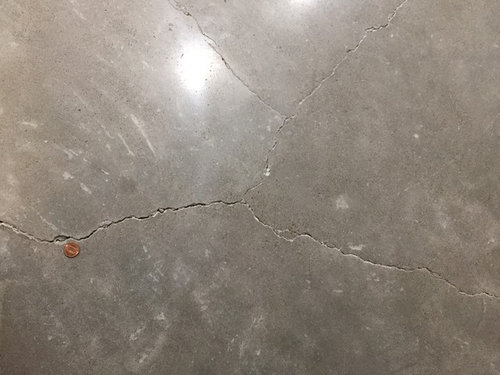
Addressing cracks in polished concrete floors:
- Evaluate the severity: Assess the cracks’ size, width, and depth to determine the appropriate course of action. Small hairline cracks may not require immediate repair, while larger or widening cracks should be addressed promptly.
- Fill and seal: For minor cracks, you can use a concrete filler or epoxy resin to fill the gaps. Ensure the product is compatible with polished concrete and follow the manufacturer’s instructions for application. After filling, seal the cracks with an appropriate concrete sealer to prevent moisture penetration and further damage.
- Patch and resurface: For more significant cracks or when the integrity of the floor is compromised, patching and resurfacing may be necessary. This involves removing the damaged section, preparing the surface, and applying a new layer of concrete or a polymer-modified overlay. Hiring a professional is recommended for this type of repair to ensure proper execution.
Q: Are cracks in polished concrete floors normal?
A: Yes, to some extent. Cracks in polished concrete floors are relatively common due to factors like shrinkage, settlement, and environmental stressors. However, the severity and extent of the cracks may vary. Regular maintenance and prompt repair can help minimize their impact.
Q: Can cracks in polished concrete floors be prevented?
A: While it’s challenging to prevent all types of cracks, proper construction practices, including adequate subfloor preparation and control joints, can help minimize the likelihood of cracking. However, it’s important to remember that some cracking is inherent to concrete.
Q: How do I maintain polished concrete floors with cracks?
A: Regularly clean the floor using a soft broom or a dust mop to remove dirt and debris. Avoid using harsh chemicals or abrasive cleaners that can worsen the cracks. Additionally, consider resealing the floor periodically to protect the surface and prevent moisture ingress.
Q: Can cracks in polished concrete floors be repaired without professional help?
A: Homeowners can fill and seal minor hairline cracks using concrete fillers or epoxy resins. However, for more extensive cracks or when structural integrity is compromised, it’s best to consult a professional contractor specializing in concrete repairs.
Q: How do I know if my polished concrete floor cracks require professional repair?
A: It’s advisable to consult a professional if you notice significant cracks widening, deepening, or causing structural concerns. A professional can assess the situation, determine the underlying cause, and recommend appropriate repair methods to ensure the longevity and safety of your polished concrete floor.
Understanding the causes and solutions for cracks in polished concrete floors can help you address the issue effectively. Regular maintenance and timely repairs will help maintain the beauty and integrity of your polished concrete floor for years to come.
Stains, Cracks, and Chips: How Each of These Impact Your Polished
Staining Cracked Concrete
Can cracks in polished concrete be repaired aesthetically?
Can Cracked Concrete Be Polished?
Concrete Floor Repair in Cleveland, OH Crack and Joint Repair
Gold Crack Concrete Repair On Polished Concrete
Matching Polished Concrete Repair Roadware Incorporated
How to Handle Cracks in Concrete – Concrete Decor
Polished Concrete Flooring Trims Spending, Improves Sustainability
Golden resin highlights cracks in the floor of TANKu0027s Xchange
Can Cracked Concrete Be Polished?
Related Posts:
- Applying Concrete Floor Paint
- Non Slip Concrete Floor Sealer
- How To Paint Concrete Garage Floor
- Outdoor Concrete Floor Ideas
- Concrete Floor Covering Ideas
- Cracks In Polished Concrete Floors
- Drylok Concrete Floor Paint Colors
- Polished Concrete Floor Thickness
- Residential Stained Concrete Floors
- Cheap Concrete Floor Finishes

